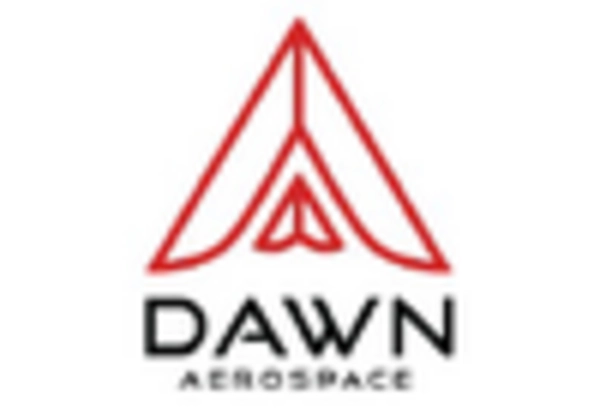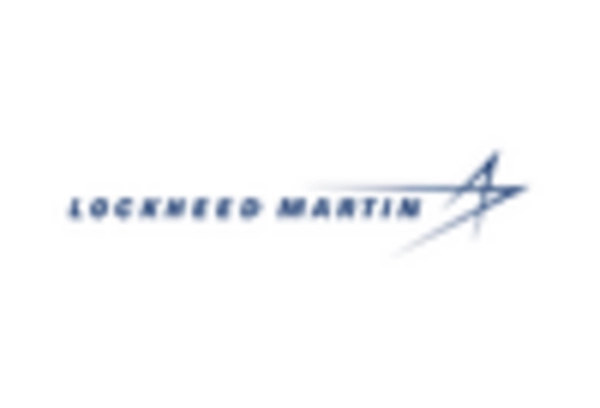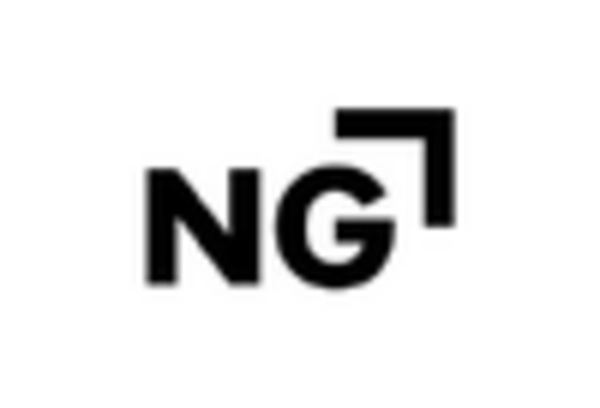Growing Regulatory Frameworks
The increasing establishment of regulatory frameworks in the space sector is a pivotal driver for the space debris-monitoring-removal market. The US government, through agencies like NASA and the Federal Aviation Administration (FAA), has been actively developing policies aimed at mitigating space debris. These regulations are likely to mandate compliance from satellite operators, thereby creating a demand for monitoring and removal services. As of 2025, it is estimated that the market could reach $1.5 billion, driven by the need for compliance with these regulations. The emphasis on sustainability in space operations further propels the need for effective debris management solutions, making this regulatory push a significant factor in the market's growth.
Rising Satellite Launch Activities
The surge in satellite launches, particularly in the US, is a crucial driver for the space debris-monitoring-removal market. With the increasing number of satellites being deployed for various applications, including telecommunications, Earth observation, and scientific research, the risk of collisions and debris generation escalates. In 2025, the US is projected to account for approximately 40% of global satellite launches, intensifying the urgency for effective debris monitoring and removal strategies. This growing activity not only raises concerns about space safety but also creates a lucrative opportunity for companies specializing in debris management. The market is expected to expand as stakeholders seek to ensure the long-term sustainability of space operations.
Increased Public Awareness and Advocacy
Public awareness regarding the dangers posed by space debris is on the rise, significantly influencing the space debris-monitoring-removal market. Advocacy groups and educational initiatives are highlighting the potential risks associated with uncontrolled debris, leading to greater public and governmental scrutiny. This heightened awareness is prompting policymakers to prioritize debris mitigation strategies, thereby creating a favorable environment for market growth. As of 2025, it is anticipated that public and private investments in debris management initiatives will increase by approximately 30%, driven by this growing concern. The demand for transparency and accountability in space operations is likely to further propel the market, as stakeholders seek to address public apprehensions.
International Collaboration on Space Safety
International collaboration is emerging as a vital driver for the space debris-monitoring-removal market. As space becomes increasingly congested, countries are recognizing the need for cooperative efforts to address debris challenges. The US is actively participating in international forums and agreements aimed at enhancing space safety and sustainability. Such collaborations are likely to lead to shared technologies, best practices, and funding opportunities for debris monitoring and removal initiatives. By 2025, it is expected that collaborative projects could account for up to 25% of the market, reflecting the importance of a unified approach to tackling the debris issue. This trend underscores the interconnected nature of space operations and the necessity for collective action.
Technological Innovations in Debris Removal
Technological innovations are transforming the landscape of the space debris-monitoring-removal market. Advancements in robotics, artificial intelligence, and propulsion systems are enabling more efficient and effective debris removal methods. For instance, the development of capture mechanisms and deorbiting technologies is gaining traction among private and public entities. As of 2025, investments in these technologies are projected to exceed $500 million, reflecting the growing recognition of the need for innovative solutions to address the debris problem. These innovations not only enhance operational capabilities but also attract funding and partnerships, further driving market growth. The integration of cutting-edge technology is likely to play a pivotal role in shaping the future of debris management.

















Leave a Comment